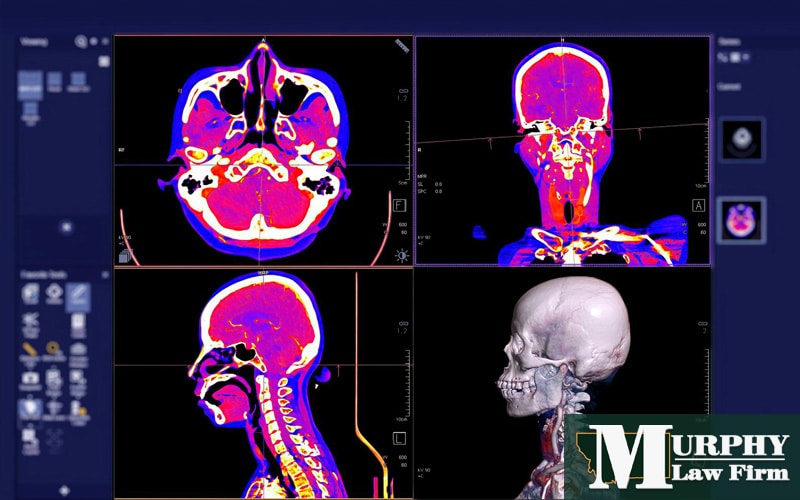Do your truck accident injuries qualify you for workers’ compensation benefits?
The trucking industry employs roughly 7.4 million Americans and thousands of Montanans, making it essential to the local and national economy. However, trucking is also a high-risk industry, with many accidents leading to fatalities and severe injuries. Truck drivers are also predisposed to certain occupational illnesses and injuries, which develop over time while they are on the job.
When a trucker is hurt on the job, they often ask:
Am I covered by workers’ compensation?
In Montana, the answer to this question can be challenging, especially if the trucker is an independent contractor or subcontractor.
Continue reading to learn more about the most common truck driving injuries and find out if you or an injured loved one is eligible for workers’ compensation. If you have any questions, don’t hesitate to reach out to the experienced Montana work injury attorneys at Murphy Law Firm.
Common types of truck driving injuries
There are 2 primary categories of occupational injuries that truck drivers are predisposed to. These injuries can permanently impact a professional driver’s career, leave them with substantial medical bills and cause pain and suffering.
1. Traumatic injuries
There are several types of truck accidents, including underrides, tire blowouts, rollover and collision accidents. Any crash can lead to traumatic injuries as a result of the impact like cuts, burns or lacerations. Workers’ compensation is available to most truck drivers in Montana in order to help them recover from the economic losses caused by these injuries.
Common traumatic injuries truck drivers suffer include:
- Soft-tissue injuries. Connective tissue damage to the tendons, ligaments, and muscles is commonly associated with truck accidents. Examples include whiplash, low or mid-back injuries, including muscle sprains, and thoracic outlet syndrome, a traumatic injury to nerves or blood vessels in the shoulder area that leads to pain, numbness, and swelling.
- Head injuries. Head and traumatic brain injuries (TBI) mostly occur when a driver hits his or her head against the interior of a truck. They include closed head injuries, like concussions, and open head injuries, like lacerations, bruises and scrapes on the head.
- Cuts and amputations. Unsecured objects, such as keys and coffee mugs, broken glass, and the overall impact of a truck accident can cause deep cuts or even loss of limbs that require stitching or surgery.
- Leg and arm injuries. Most injuries to the leg or arm are the result of involuntary leg and arm movements caused by a sudden stop during an accident. Some of these injuries are serious and must be treated immediately, while others are not evident at first but result in chronic pain.
- Chest injuries. Chest trauma can be caused when the driver collides with the steering wheel, airbags or seat belts. These injuries can be mild, like bruises or contusions, or severe, like an injury to the internal organs and broken ribs.
2. Trucking occupational illnesses and injuries
Truck accidents are not the only cause of trucking injuries. Sitting behind the wheel for many hours brings about its fair share of health issues. Research shows that sedentary behavior is associated with at least 35 chronic conditions and diseases, including diabetes and sleep apnea. In many cases, these occupational illnesses and injuries are also covered under workers’ compensation for truck drivers.
Such conditions include:
- Repetitive stress injuries (RSI). These affect soft tissues in different areas of the body and result from repetitive motion, overuse and cumulative trauma. Truck drivers commonly experience RSI conditions such as tendonitis, bursitis and tenosynovitis due to their driving posture and the number of hours they spend on the road.
- Falls. Truck driving involves climbing in and out of truck cabins, up and down loading docks, and other high places. This poses a risk of falls to the driver. Back and knee strains are common injuries that result from falls.
- Musculoskeletal disorders. These are commonly caused by overexertion of the upper extremities, back and neck. Strenuous activities, like loading and unloading, climbing into cab trucks and bending to fix tires are all culprits that can cause musculoskeletal disorders.
- Obesity. Truck drivers are twice as likely to be obese compared to the average population. This is at least partially due to their sedentary job, as well as work stress, disrupted sleep cycles and cardiac rhythms. Obesity can be a precursor to a number of health conditions, such as diabetes and heart problems.
- Substance abuse. Smoking and other substance abuse are prevalent among truck drivers who feel as though they must depend on stimulants to keep them awake for long hours and make deliveries faster due to pressure from their employer.
Montana workers’ compensation for brain bleed injuries
Brain bleed injury at work in Montana? Find out how to file a workers’ comp claim and get the most compensation possible.
Can injured truckers get workers’ compensation in Montana?
While some workers’ comp exemptions exist, Montana workers’ comp laws require most employers (including trucking companies) in the state to provide their employees with workers’ compensation benefits in the event of a work-related accident or illness.
Workers’ comp should cover your medical treatment—including prescription medication, hospital and doctor visits and surgery. Lost wage benefits should also compensate truck drivers for lost earnings while they recover from their condition. Death benefits, in the event of a fatal truck accident, are meant to cater to the funeral expenses and take care of surviving dependents.
Workers’ compensation is a no-fault system, meaning you are only required to prove you got hurt on the job. It does not matter how the accident occurred or whose fault it was.
Can you file a personal injury lawsuit?
In cases where a third party—such as a truck manufacturing company or another driver—was either partially or fully responsible for a truck accident, the injured truck driver may be able to file a personal injury lawsuit against the third-party. However, unlike workers’ compensation, in a negligence lawsuit, you must provide proof (evidence) that the defendant was indeed negligent.
An advantage of filing a personal injury lawsuit following a truck accident is that these claims allow you to seek additional benefits that are not available in the workers’ compensation system, such as pain and suffering.
When to talk to a Montana lawyer
Depending on the nature of your accident or injury, a workers’ compensation or personal injury lawyer is your best shot at getting fully compensated for your truck accident injuries. To maximize your benefits while reducing the time it takes to receive compensation, consult with a Montana work injury lawyer at Murphy Law Firm to learn about your rights and the next best steps.
We can help you navigate the legal system, ensure that you file your claim within the deadlines and represent your best interests when negotiating with the insurance company. Contact us today for your free consultation.
Personal Injury vs. Workers’ Compensation in Montana
Learn the key differences between workers’ compensation and personal injury claims so you can maximize your compensation after an accident.





